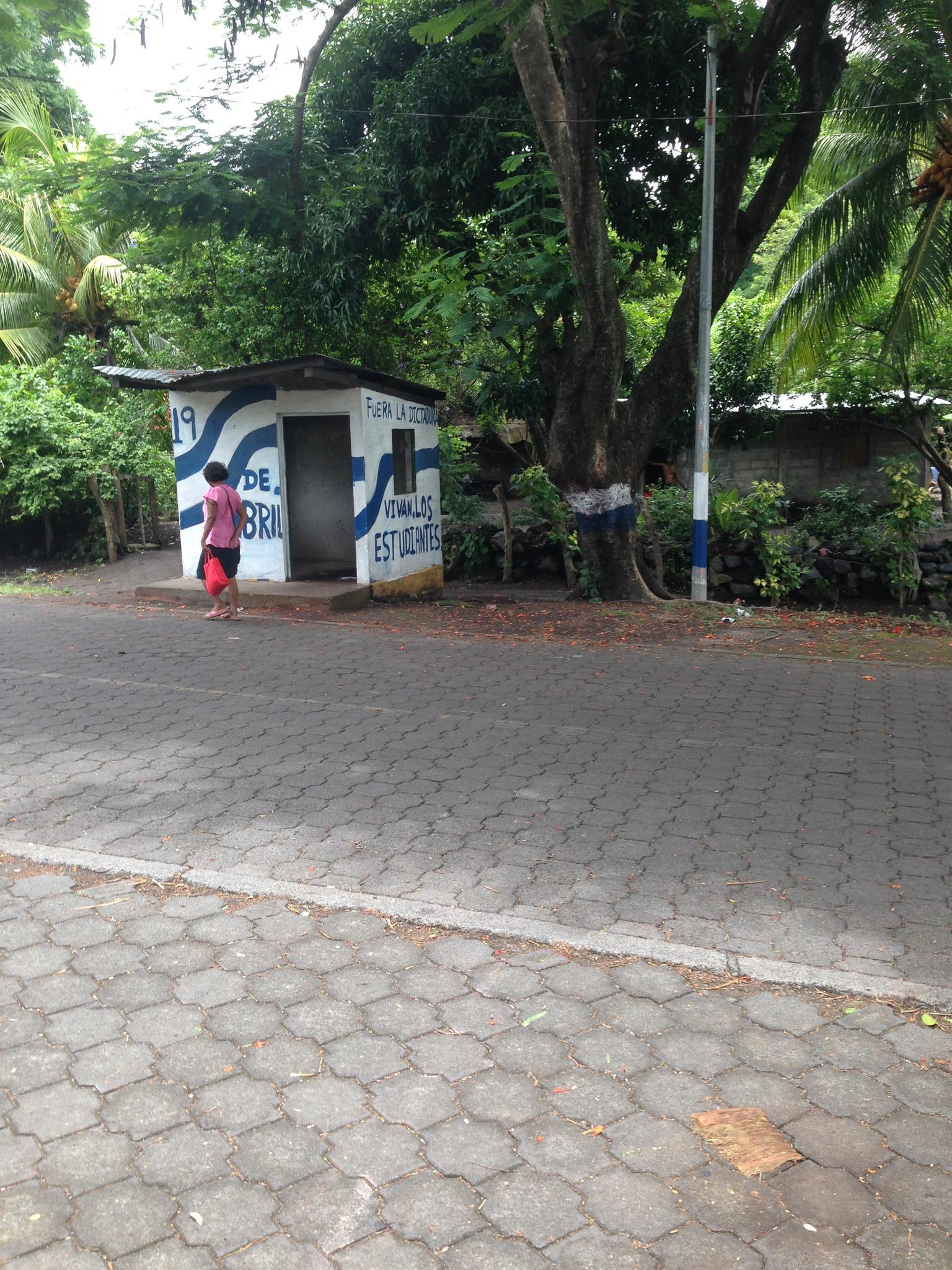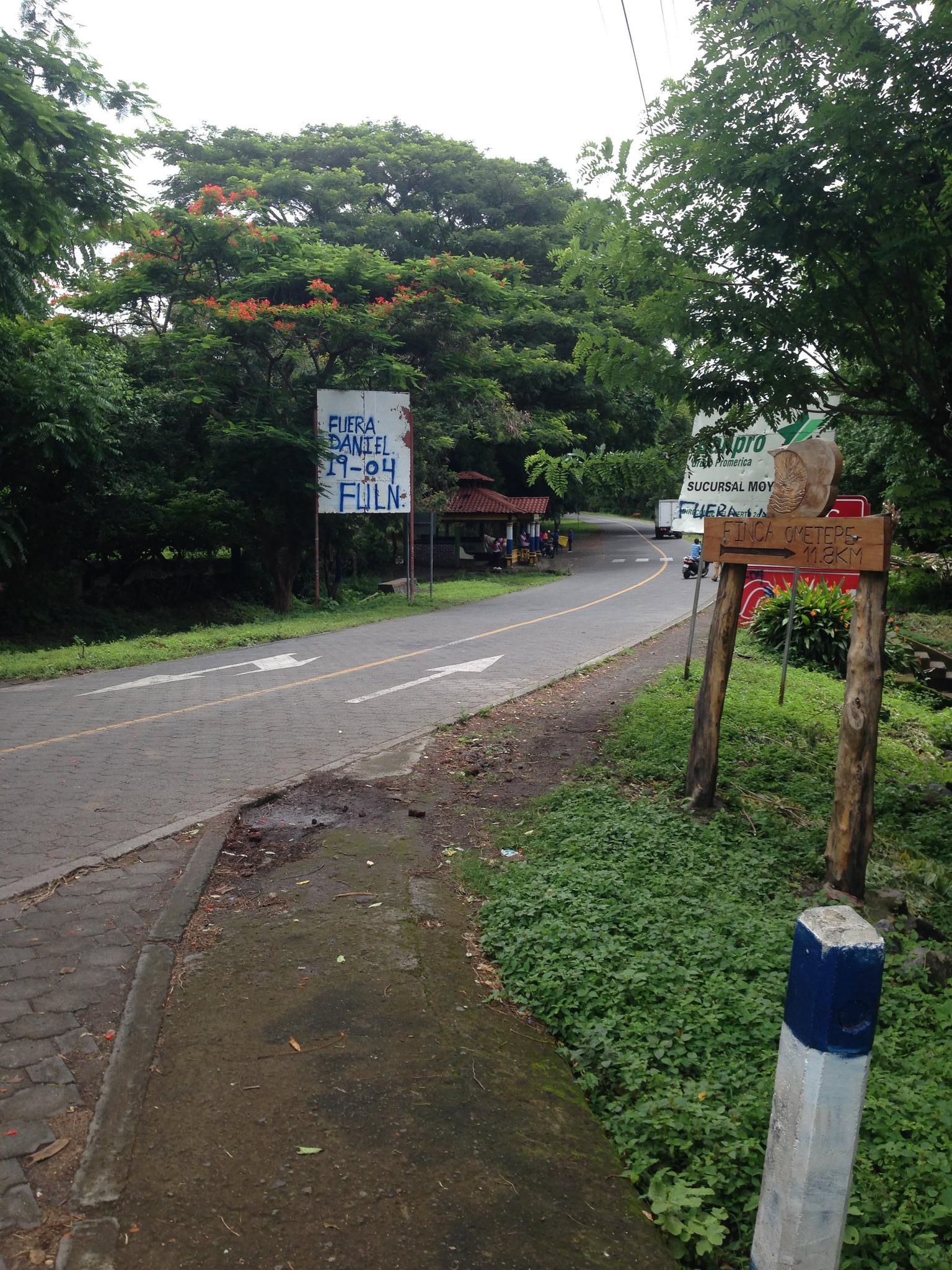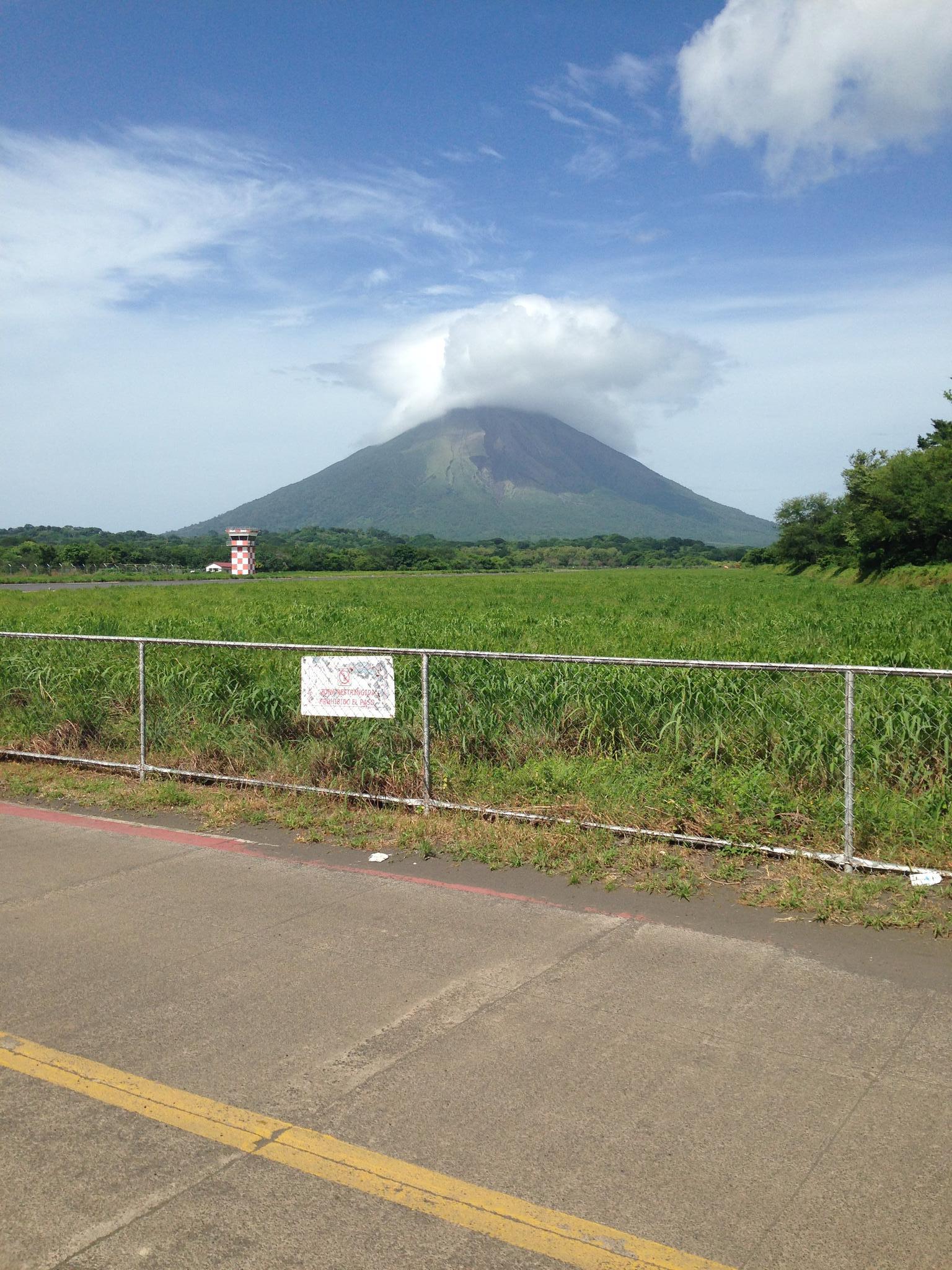Is Nicaragua Hopelessly Divided?
Each side blames the other as the conflict intensifies
This is the third article in a three-part series on Nicaraguan perspectives and the atmosphere in Nicaragua in mid-2018 at the height of the civil unrest in the nation.See article one, People are Fleeing but the South is Safe, here and article two, Was Marcos Wrong About the South?, here.
Ometepe, Nicaragua (in the middle of Lake Nicaragua)
July 2018
The ferry dock is empty except for a few locals waiting to head to Ometepe, the island of two volcanoes in the middle of Lake Nicaragua. We are the only foreign tourists waiting. We board the boat which is a quarter full and see the intimidating volcanoes. The waves make it feel like we are in the ocean. It looks like Jurassic Park.
My wife and I take a communal taxi, shared with two other people, to the ferry dock. I ask the driver how things are going for his business. A little better now but still not good he says. For a few weeks recently, he was too afraid to leave his house to work. Reports of other taxis being aggressively attacked and damaged by anti-government protestors at road blocks made him stay home. The road blocks nation-wide are manned by people with the black hoods and pseudo-mortars, just like what we witnessed in San Juan del Sur.
The road blocks in this region have been cleared, the driver says, so it is safer to work. However, he worryingly converses with another customer. The previous evening a police officer in a nearby town was kidnapped and killed by opposition forces. The driver says to me that the opposition has a right to peacefully protest but not to destroy property and take lives.
The driver is Evangelical, and discusses how his entire church is pro-Sandinista. In addition to class dynamics, there is also a religious dimension to the conflict in Nicaragua. The Catholic Church is an outspoken critic of Ortega. The Evangelical Churches give Ortega his base of support. While I do encounter exceptions to the rule, most of the Catholics we meet are anti-Ortega. Ortega’s supporters are mostly Evangelical.
No Tourists in a Tourist Town
We arrive on Ometepe Island. The economy is centered on tourism but empty of tourists. Taxi drivers and hostel owners desperately try to woo us to their services as we walk along the main street. We already have a hostel in mind, recommended by Ometepe resident Diego from Was Marcos Wrong About the South?. For 20 dollars, we get a clean and comfortable room with a private bathroom. Given that we are the only people at the hostel, the beautiful garden full of mango trees is also our exclusive domain.

We are the first guests in a week, Adrianna the manager tells us. Adrianna is the daughter of Juan, the hostel’s owner. Adrianna lives in Managua, the capital, working in the office of a company that makes electrical fixtures. The company, like many businesses in the big cities, has sent their employees on furlough. Adrianna’s boyfriend is in the same boat. A native of Ometepe but working in Managua, he too is home on furlough. The protests and the government reaction have destroyed almost all commerce throughout the country. The economic damage goes well beyond the disappearance of tourism.
Adrianna invested her savings into the hostel. It opened in April 2017, exactly one year before the protests started. Things were going quite well until the protests started. Now the business in which Adrianna invested is empty and her employment in the capital is on pause.
We go to dinner at a pizza place on the main street. It looks very new and chic with wine racks and expensive furniture. The prices are not high and no one is in the restaurant. It is a depressing sight.
Juan says tourism on the island started about five years ago and really took off the last two. People have obviously poured lots of money into businesses. It is heart-rending to see the return on investment unrealized, at least for the moment.
Our first full day on the island we go to a spring to swim. While there, we meet a Nicaraguan from the large city of Grenada. She and her daughter are escaping the protests. “The city is dangerous right now. You must be careful. Things are out of control with the government.”
They are the Problem
The Grenadian has a Nicaraguan driver with her, and as we leave the spring she offers us a ride. We accept. As we get to the main road that goes around the island, we notice a massive pro-Sandinista demonstration. The Grenadian says to us that they are all fools who are paid by the government to demonstrate. She is blaming the government for the strife in the country.
This woman clearly has means. While the current conflict does not neatly cross class lines, there is a preponderance of monied people who oppose the government. A few days later, back at the hostel in San Juan del Sur, I listen to a conversation between two well-off Managuans. They claim the government’s support rests on the ignorant lower classes and disparagingly reference a woman they saw on TV who knelt in front of Ortega as if he was a god.
These privileged Managuans also claim that the anti-government protests are completely peaceful. They claim the government has blamed the protestors for many atrocities that were actually committed by the government supported paramilitary forces. There is video proof, they argue. During our conversation they watch an opposition television station that is broadcasting an anti-government protest. The Managuans look very upset.
One of the Managuans says that all people have the right to disagree but not to disagree violently. People should have the right to protest without getting shot. She wants to leave the country, maybe Costa Rica or somewhere else. She lost her job because her boss, a Korean, left the country due to the conflict. The other Managuan does not mention employment. Both are planning to go to the Caribbean coast on the other side of the country. Later on Facebook, I see that one of them ends up in Europe for an extended period. They have options.
It is a common refrain that one side gets blamed for everything. Camila, a teacher from Managua who we meet, is a government employee and very pro-Sandinista. She says that the protestors are ruining the country. They have the right to speak but not be violent.
Camila was an election observer in 2016 and says with conviction that there was no fraud. The other side is the problem. She wants the country to just go back to normal. Camila, like the monied Managuans, is emotionally upset while discussing the current conflict.
Each side says the same thing about the other. Each side refuses to believe in the legitimacy of the other. The anti-government protesters say their counterparts are paid by the government to attend rallies while the Sandinista supporters call the protestors violent and funded by outside forces. One side is good and the other completely bad. There is no neutrality. People on both sides are angry.
I avoid taking a side in this conflict. I listen and ask questions but try hard not to give a reaction of sympathy to one side. At the very least, the fact that the United States has a fraught history with Nicaragua and is currently strongly aligned against the current government means it is important to keep a low-profile. I avoid taking photos of anything political, like signs or protests.
It is undeniable, however, that too much time in power can cause institutional rot and corruption. The government’s heavy hand has led them to erode the professional and local bureaucracies. Orders from Managua go to the Sandinista party headquarters which then go to the local Ometepe government, says Juan the Ometepe hostel owner.
The Sandinistas are the Government
I notice the Sandinista party flag prominently displayed outside government offices. In other words, the Sandinistas are the government. In a pro-government rally in San Juan del Sur, we watch the Sandinistas wave their red and black flags, but the blue and white Nicaraguan flag is nowhere to be found. In fact, the colors blue and white have been co-opted by the opposition. Imagine going to a Republican or Democratic Party rally and not seeing the Stars and Stripes but only a party flag. Now imagine an elephant flag displayed outside every federal building in the United States.
Juan says that the Sandinistas use their absolute control of the national and local governments to enrich themselves. They give land and contracts to each other. Moreover, the media is now mostly controlled by Ortega. It is becoming a one-party state akin to China, I silently think to myself.
As we discuss, every few minutes Juan rhetorically asks “Who wants this [government]?” Juan says the reason that there is less conflict in the south is that the government controlled industries — like timber — are not in the south. As such, the opposition is focusing its energies on hitting the regime’s pocketbook. The government is tied up in business, proof of their corruption and one-party state control.

The government’s heavy hand is also present in education. Thomas, the manager of the San Juan del Sur hostel, says that everyday the children stand in school and say “thank you Mr. President” at the beginning of the day. University professors offer extra marks to attend Sandinista rallies. The party-liners move up regardless of talent. Everything is corrupted in this increasingly one-party state.
After a few days on Ometepe, we say goodbye to Juan and Adrianna. On Ometepe, many hostels, hotels and restaurants were shuttered. We want to try and go to Grenada but we have heard that there are even fewer businesses open there. We decide to return to San Juan del Sur for a few days before returning to Costa Rica and then moving on to South America.
Communists are Bad … but the Roads and Public Safety are Nice
On the taxi ride from the ferry docks to San Juan del Sur, I am reminded why this conflict and the labels people throw at each other hide the nuances. Our driver continuously bashes the government. He says the Sandinistas forced him into the army at 14 during the civil war in the 1980s but he fled first to Costa Rica and then Panama. The cabbie says the Sandinistas want to turn Nicaragua into a communist disaster like Cuba. He hopes the United States blocks all oil imports and trade to Nicaragua to strangle the country and overthrow the government. The cabbie is seriously considering going back to Panama soon, especially if there are no early elections. The opposition is calling for immediate elections, years ahead of their scheduled date.
For a supposedly communist country, however, he has found economic opportunity as a capitalist. The cabbie says he returned to Nicaragua only recently because tourism was exploding and it was easy to make money. His car is his “machete”.Tourism took off recently in part because Nicaragua became much safer. People tell me 10 years ago there were major problems with crime but the government focused heavily on combating crime. Now it is the safest nation in Central America. Juan, the Ometepe hostel owner, concedes that the national government has done a good job making the country safer and attributes this to extreme vigilance by the police. Other anti-government Nicaraguans with whom I talk also acknowledge the government's success in this area.
The “communist” security is awe-inspiring, given the dangerous neighborhood in which Nicaragua lies. The “communist” built roads we are driving on are much better than the roads we saw in Cuba in 2017. No matter. Communism is an evil, Cuba is a failure, and the Castros are chums with Ortega.
Throughout Latin America, the label of communist is a powerful one and thrown around loosely. Venezuela is a failing state and Cuba is far from an economic success. Nicaragua’s left-wing government is murdering its citizens. Lula, the left-wing president of Brazil, is about to be imprisoned for supposed corruption. The image of the left is in disarray, and the right avidly smears their left-wing opponents with the term “communist” even if the reality is far from communism.
After a few more days on the beach in San Juan del Sur, we leave disappointed we did not get to see more of the country. However, Nicaragua came to us as furloughed employees came home to their villages and those with means came to our resort town. A rapid acceleration of the conflict never materialized and as of summer 2019, reports say that the country is mostly stable and peaceful save sporadic protests.
As we leave for Costa Rica, I hope that the country’s people are not forced into crime to survive. I hope they can continue their healthy fruit, beans, and rice filled diets. They are a far less obese society than Mexico, a result of the diet and a comparatively much smaller consumption of soda. I hope they continue building fine roads and that the world’s tourists return to them. For a country that is already one of the poorest in the region and engulfed in terrible civil unrest, hope will be important.


0 Comments Add a Comment?